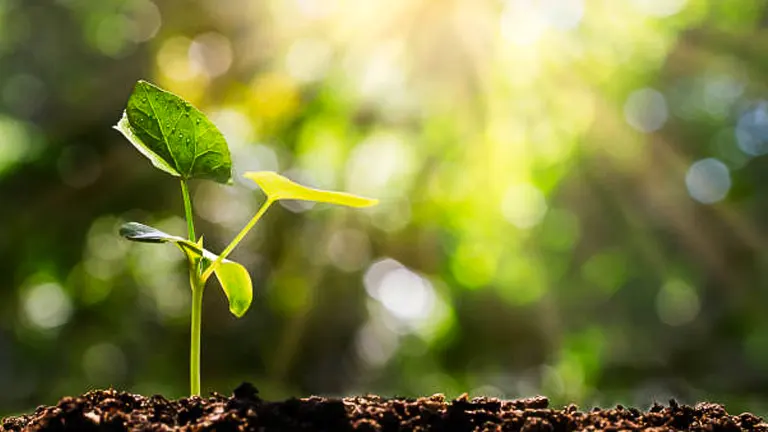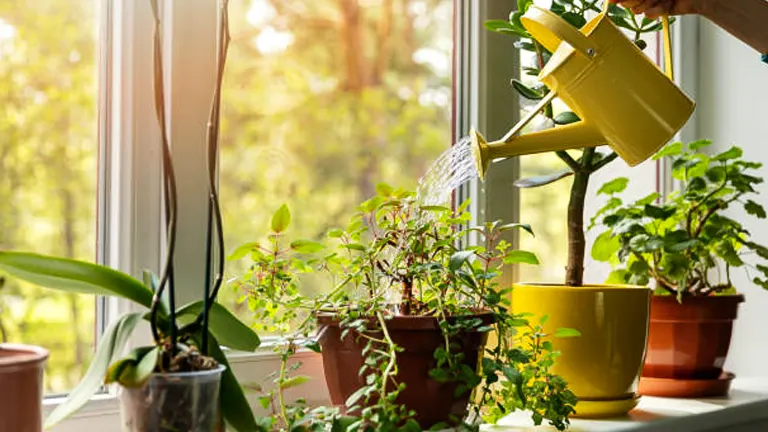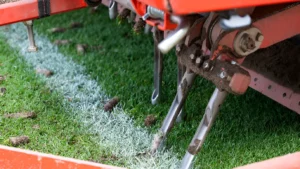A Gardener’s Guide to Sun Exposure: Mastering Light for Optimal Garden Health
- June 27, 2024
- 0 comment
Discover practical tips on optimal sun exposure for your garden. Learn how to manage light effectively to boost plant growth and health. Welcome to your guide on using sunlight to boost your garden’s health. Sunlight is essential for plant growth, health, and bloom.

In this guide, we’ll show you simple and effective ways to manage light in your garden. Whether you’re looking to enhance growth or improve plant health, you’re in the right place. Let’s explore how to make the most of the sun for a thriving garden.
Table of Contents
- Understanding Sunlight and Plant Health
- Assessing Your Garden’s Light Conditions
- Sun Exposure Requirements for Common Garden Plants
- Techniques to Optimize Light Absorption
- Managing Shade: Balancing Light and Shadow
- Troubleshooting Common Sunlight-Related Issues
- Innovative Gardening Technologies for Light Management
- Conclusion
- FAQs
Understanding Sunlight and Plant Health

Sunlight is more than just a source of energy for plants; it’s a critical environmental signal that triggers various physiological and developmental processes. Through photosynthesis, plants convert light energy into chemical energy, stored as sugars, which fuel growth and reproduction. However, the impact of sunlight extends beyond photosynthesis, influencing everything from flowering timing to stress responses.
Photosynthesis and Beyond
Photosynthesis in plants occurs primarily through two types of chlorophyll, which absorb light primarily in the blue and red wavelengths. The efficiency of photosynthesis is not just about the amount of light but also its quality. For example, blue light promotes more compact and robust growth, ideal for leafy vegetables, while red light can enhance flowering in certain species.
Plant Sunlight Categories and Their Physiological Impacts
Plants are categorized based on their sunlight requirements into three main types: full sun, partial sun/shade, and full shade. Each category has distinct physiological traits adapted to its light environment:
- Full Sun: These plants require at least six hours of direct sunlight daily. High light levels maximize the rate of photosynthesis, supporting vigorous growth and abundant flowering. Examples include most vegetable crops like tomatoes and cucumbers, and flowers such as sunflowers and petunias.
- Partial Sun/Shade: These plants thrive with filtered sunlight or just a few hours of direct sun. They are adapted to make the most of lower light conditions through more efficient light-harvesting complexes in their chloroplasts. This adaptation prevents the photo-oxidative damage that might occur in brighter light. Ideal plants for these conditions include ferns, hydrangeas, and many orchids.
- Full Shade: Receiving less than three hours of direct sunlight, these plants are often found in understory environments in the wild. They have highly sensitive photosystems and can utilize green light, which penetrates deeper into shade than red or blue wavelengths. Suitable examples are hostas and mosses.
Light Requirements and Plant Responses
Here’s a table outlining the general light requirements for different plant categories and their typical responses to those light conditions:
| Light Category | Daily Light Requirement | Typical Plants | Physiological Response |
|---|---|---|---|
| Full Sun | 6+ hours | Tomatoes, Sunflowers | Maximized photosynthesis, vigorous growth, abundant bloom |
| Partial Sun/Shade | 3-6 hours | Ferns, Hydrangeas | Efficient light use, protected from photo-oxidative stress |
| Full Shade | <3 hours | Hostas, Mosses | Utilizes green light, adapted to low light environments |
Understanding these light requirements and the underlying physiological mechanisms helps gardeners design their gardens to optimize plant health and productivity effectively. By matching plants to their preferred light environments, gardeners can significantly enhance their garden’s overall health and aesthetic appeal.
Assessing Your Garden’s Light Conditions

Proper assessment of sunlight exposure is crucial for tailoring your garden environment to the needs of your plants. By accurately measuring and analyzing light conditions, you can optimize plant health and maximize growth. Here are advanced methods and tools to assess your garden’s light conditions scientifically:
Advanced Techniques for Sunlight Measurement
- Sun Mapping
- Description: This involves recording the sun’s trajectory and intensity across different garden areas throughout the day. By observing the duration and quality of sunlight each area receives, you can make informed decisions on plant placement.
- Tools: Aside from manual tracking, there are digital tools like sun mapping software and mobile apps that provide real-time solar tracking and historical sun path data.
- Using Light Meters
- Description: Light meters provide precise measurements of light intensity (measured in lux or foot-candles). They can be essential for understanding the specific light requirements of various plants and ensuring that each plant receives its optimal light level.
- Tools: Handheld digital light meters for garden use, some of which connect to smartphones for detailed analysis and logging.
Methods of Assessing Light Conditions
| Method | Tool | Description | Best for |
|---|---|---|---|
| Sun Mapping | Sun Tracker App | Uses GPS and date to simulate the sun’s path and highlight areas receiving various light intensities. | Planning garden layout, understanding seasonal changes in light. |
| Light Meters | Digital Light Meter | Measures the exact amount of light (lux) reaching a spot, with data logging features. | Precise adjustments for plant health, scientific gardening experiments. |
Applying Scientific Insights
Using these techniques, you can gather precise data on how light behaves in your garden throughout different times of the year. For example, the lux measurements from light meters can help you adjust plant locations during the growing season or as new buildings and trees alter light patterns. Additionally, understanding the photoperiod (the length of day and night) critical to certain plants can help in planning when to plant for optimal growth and bloom cycles.
Integration with Garden Planning
Integrating this data into your garden planning allows for a more responsive garden design. By mapping light conditions, you can create zones within your garden that cater specifically to the light needs of different plant groups, enhancing overall plant health and garden productivity.
Sun Exposure Requirements for Common Garden Plants

Understanding the specific light requirements of different plant types is essential for maximizing garden productivity and plant health. Light affects various physiological processes in plants, including photosynthesis, phototropism, and photoperiodism, which influence growth rates, flowering times, and fruit production.
Detailed Analysis of Light Requirements
- Vegetables: Most vegetables are sun-loving and require substantial amounts of direct sunlight to produce bountiful yields. For instance, tomatoes, cucumbers, and peppers thrive under long photoperiods and high light intensities, typically around 2000 to 3000 µmol/m²/s during peak daylight.
- Flowers: Flowers such as sunflowers, petunias, and marigolds also demand high light levels for optimal growth and vibrant blooms. These plants need a minimum of 6 hours of direct sunlight, ideally receiving light intensities similar to vegetables for best results. In contrast, shade-tolerant flowers like impatiens and begonias require lower light intensities, around 500 to 1000 µmol/m²/s, and can thrive under partial sun exposure.
- Herbs: Culinary herbs show diverse light requirements. Basil, thyme, and rosemary flourish in full sun with light intensities nearing 1500 µmol/m²/s, enhancing their aromatic oil production. Meanwhile, herbs like mint and parsley can perform well in partial shade, receiving about 800 µmol/m²/s, which is sufficient to maintain their lush, leafy growth without risking sunburn.
Light Requirements and Recommendations for Garden Plants
| Plant Type | Examples | Light Requirement | Optimal Light Intensity (µmol/m²/s) | Photoperiod |
|---|---|---|---|---|
| Vegetables | Tomatoes, Peppers | Full sun | 2000-3000 | > 6 hours |
| Flowers | Sunflowers, Marigolds | Full sun | 2000-3000 | > 6 hours |
| Flowers | Impatiens, Begonias | Partial shade | 500-1000 | 3-4 hours |
| Herbs | Basil, Rosemary | Full sun | 1500-2000 | > 6 hours |
| Herbs | Mint, Parsley | Partial shade | 800-1000 | 3-5 hours |
Application in Garden Planning
Using this detailed information, gardeners can more precisely plan their planting strategies to align with the natural light conditions of their gardens. By understanding and adjusting to the specific light needs of each plant, gardeners can optimize each plant’s health and productivity, leading to healthier growth and more abundant harvests.
Techniques to Optimize Light Absorption

Optimizing light absorption is vital for maximizing both plant health and agricultural yield. Effective strategies can transform a garden’s light environment, significantly boosting the growth and vitality of plants. Here are detailed techniques and their scientific benefits:
1. Pruning
- Pruning involves selectively removing parts of a plant, such as branches or stems, to improve light penetration and air circulation.
- Pruning increases photosynthetic efficiency by reducing self-shading among leaves. Studies have shown that proper pruning can enhance light absorption by up to 30%, especially in densely planted areas.
2. Spacing
- This technique ensures that plants are spaced adequately to prevent them from overshadowing each other as they mature.
- Adequate spacing allows for optimal light distribution, essential for photosynthesis. Research indicates that strategic spacing can improve light availability to lower canopy levels by as much as 25%, critical in high-density planting such as urban vegetable gardens.
3. Reflective Materials
- Using materials like reflective mulches or garden mirrors can redirect sunlight to typically shaded areas of the garden.
- Reflective materials can increase photosynthetically active radiation (PAR) availability by reflecting sunlight onto plants from different angles. This is particularly effective in urban gardens, where direct sunlight is limited by structures. Studies suggest that reflective mulches can enhance light availability by 15-20%.
Summary of Light Optimization Techniques
| Technique | Tool/Method | Increase in Light Availability | Practical Application |
|---|---|---|---|
| Pruning | Shears, Pruning Saws | Up to 30% | Enhancing canopy penetration |
| Spacing | Planting Guides, Rulers | Up to 25% | Preventing plant overshadowing |
| Reflective Materials | Reflective Mulches, Mirrors | 15-20% | Redirecting light in shaded areas |
Application and Considerations
Implementing these techniques requires careful planning and consideration of the specific environmental conditions of each garden. For instance, while reflective materials are highly beneficial in shaded urban gardens, they may be less necessary in open, rural gardens with ample sunlight. Similarly, the extent of pruning and spacing will vary depending on the type of plants and their individual light needs.
Managing Shade: Balancing Light and Shadow
While sunlight is essential, managing shaded areas is equally important for plant diversity and landscape aesthetics. Here’s how to make the most out of your garden’s shaded spots:
- Choosing the Right Plants: Some plants excel in low-light conditions. Planting shade-tolerant species such as hostas, ferns, and astilbes can turn a dim garden corner into a lush, vibrant area.
- Layering Plant Heights: Utilize a technique called “layering” by planting taller shade-tolerant plants at the back and shorter ones in the front. This creates a visually appealing gradient and makes efficient use of available light.
- Artificial Lighting: For particularly dark corners where no plants seem to thrive, consider installing garden-friendly artificial lighting. This not only allows more plant variety but also extends the beauty of your garden into the evening hours.
By implementing these strategies, you can create a balanced environment that supports a wide range of plants, enhancing both the health and the beauty of your garden.
Troubleshooting Common Sunlight-Related Issues

Even with careful planning and management, sunlight-related problems can arise. Here are common issues and their solutions:
- Leaf Burn: This occurs when plants that aren’t adapted to intense light are exposed to too much sun. To mitigate this, gradually acclimate plants to brighter conditions or provide some shade during the hottest part of the day.
- Inadequate Growth: If plants aren’t thriving despite proper care, it might be due to insufficient light. Consider relocating these plants to a sunnier spot or pruning nearby vegetation to increase sunlight exposure.
- Uneven Blooming: Plants that receive uneven light often develop flowers only on one side. Rotating pots regularly or adjusting plant positions can ensure more balanced exposure, leading to uniform growth and blooming.
By identifying and understanding these common issues, you can quickly take steps to correct them, improving your garden’s overall health and aesthetic.
Innovative Gardening Technologies for Light Management
Advancements in gardening technology offer new ways to optimize light exposure:
- Adjustable Shading Systems: These systems allow you to control the amount of sunlight reaching your garden throughout the day. Perfect for areas with varying light conditions, they help protect plants from excess sun while ensuring enough light during less intense hours.
- Grow Lights: For serious gardeners looking to extend the growing season or boost plants in dim areas, grow lights provide specific light spectra ideal for plant growth. They can be particularly useful in winter months or in regions with less natural sunlight.
- Smart Garden Sensors: These devices monitor light levels, moisture, and nutrient content in the soil, providing real-time feedback to help you make informed decisions about light management and other gardening activities.
Embracing these technologies can make a significant difference in managing garden light exposure efficiently, ensuring your plants receive just what they need for optimal growth.
Related Post
- How to Build a Barn: A Step-by-Step Guide for Beginners
- How to Build a Sustainable Compost Bin: Easy and Eco-Friendly DIY
- How to Fertilize Bougainvillea: A Complete Guide for Stunning Blooms
- How to Fertilize Apple Trees: Essential Tips for a Bountiful Harvest
- How to Fertilize Lemon Trees: Secrets for Thriving Citrus
- How to Fertilize Avocado Tree: A Step-by-Step Guide for Lush Growth
- 10 Best Bow Saws to Buy in 2024: Top Picks for the Money
- Best Miter Saw For Beginners
- Top 10 Pruning Saws to Buy in 2024: Best for the Money
- 7 Best Pocket Chainsaw
Conclusion
Mastering the art of sun exposure in gardening doesn’t just involve understanding the science behind it—it’s also about observing, experimenting, and adjusting to find what works best for your garden. Every garden is unique, and what works for one may not work for another. Use the strategies discussed here as a starting point, and don’t be afraid to tweak them to suit your specific conditions.
FAQs
- What is the best way to determine how much sun my garden gets?
Use sun mapping or a light meter to measure the intensity and duration of sunlight in different areas of your garden. This helps in planning plant placement according to their light requirements. - Can plants get too much sunlight?
Yes, excessive sunlight can lead to leaf burn, especially in plants not adapted to full sun exposure. Providing partial shade during the hottest part of the day can help prevent this. - How can I increase sunlight in a shady garden?
Use reflective materials like mirrors or light-colored mulches to bounce additional light onto your plants. Pruning overhead branches can also increase light availability. - What are the signs that my plants are not getting enough sunlight?
Signs include leggy growth, fewer flowers or fruits, and dull or pale leaves. These symptoms suggest that the plant may need a sunnier spot. - How does the type of light affect plant growth?
Different colors in light affect plant processes differently. For example, blue light promotes leafy growth, while red light helps with flowering and fruit production. - What should I do if different plants in the same area have different sun needs?
Consider using planters or pots for more flexibility in positioning. Alternatively, arrange plants so that taller, sun-loving plants provide partial shade for those with lesser light requirements. - Can artificial lighting be a substitute for sunlight in a garden?
Yes, especially in regions with long winters or limited natural sunlight. Grow lights can provide the necessary spectrum of light for photosynthesis and can be particularly useful for starting seeds indoors. - Are there tools that can help me manage light exposure more effectively?
Yes, adjustable shading systems and smart garden sensors are useful for optimizing light exposure. These tools allow you to adjust conditions dynamically based on real-time data about light levels and plant health.
With these insights into sun exposure, you’re now equipped to harness the power of sunlight to enhance your garden’s health and productivity. Remember, a little knowledge goes a long way in transforming your green spaces. Happy gardening!

Kristine Moore
Forestry AuthorI'm Kristine Moore, a seasoned garden landscaping professional with over 30 years of experience. My extensive career has been dedicated to transforming outdoor spaces into stunning, sustainable landscapes. With a deep understanding of horticulture, design principles, and environmental stewardship, I have become a respected figure in the field, known for creating harmonious, visually appealing, and eco-friendly gardens. My commitment to excellence and continuous learning in landscaping trends and techniques has solidified my reputation as an expert in garden design and implementation.













Leave your comment